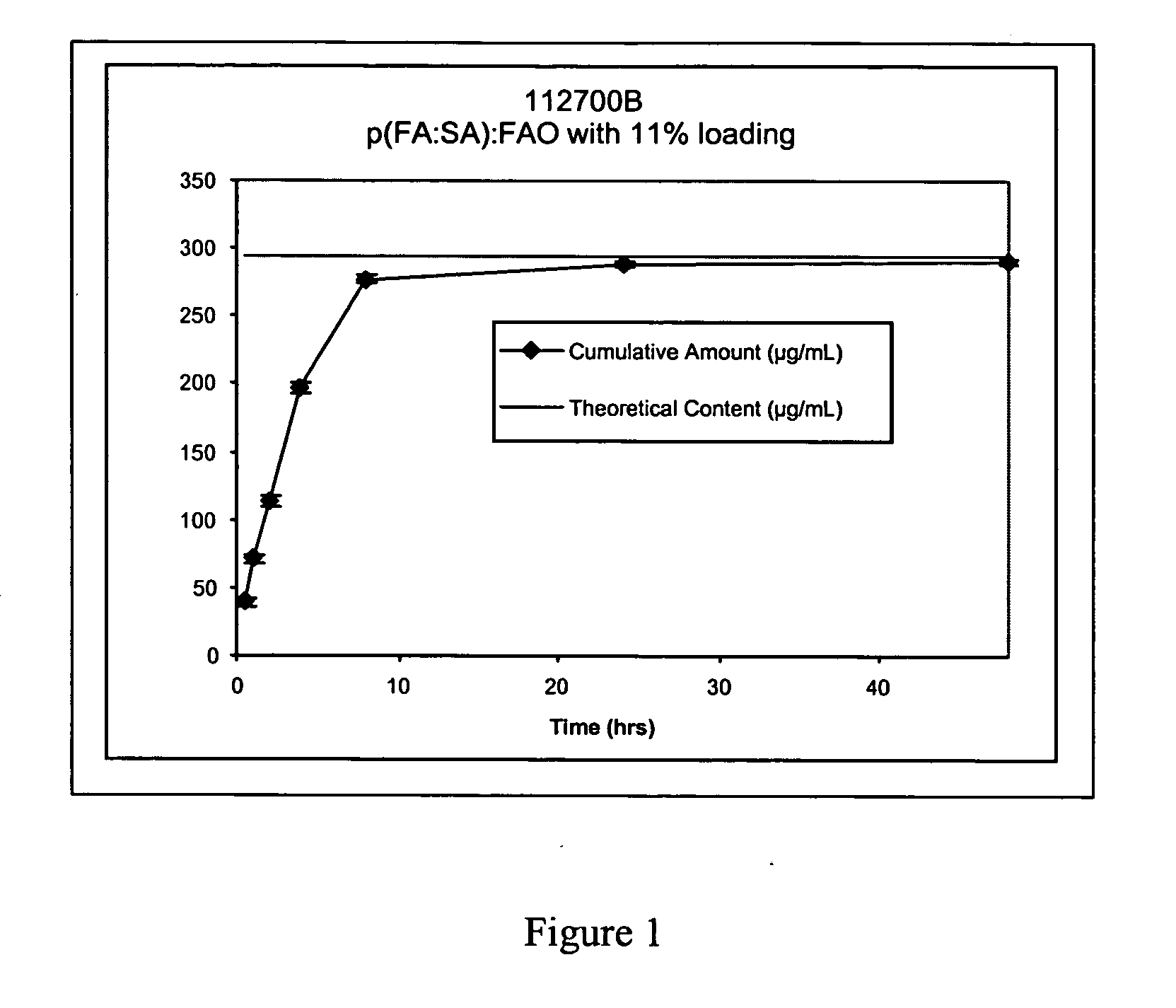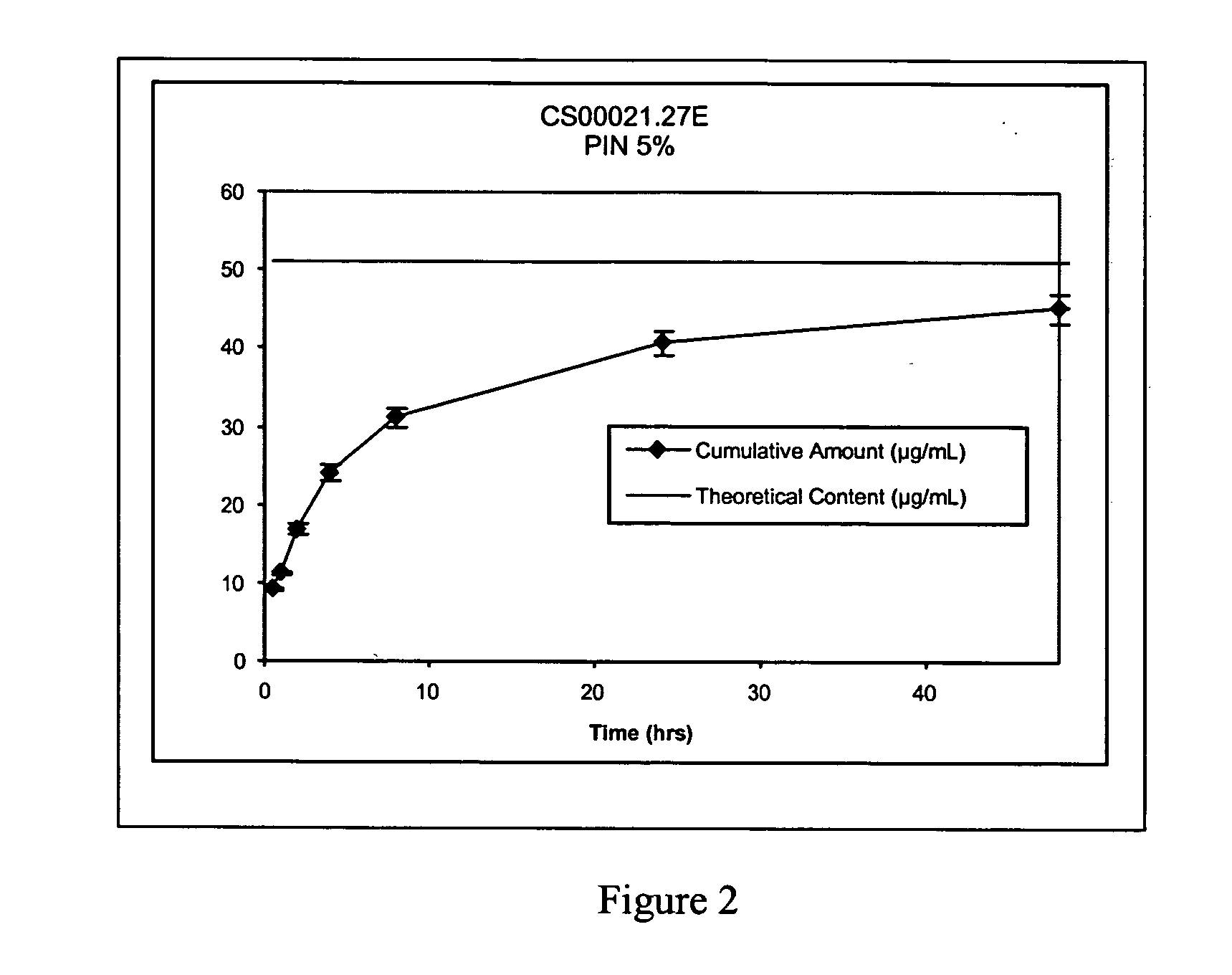Method for inhibiting the growth of gastrointestinal tract tumors
a tumor growth and gastrointestinal tract technology, applied in the field of cancer, can solve the problems of high local concentration, gastrointestinal tumor growth, and resorption of polyps, and achieve the effect of reducing the incidence of gastrointestinal tumors
- Summary
- Abstract
- Description
- Claims
- Application Information
AI Technical Summary
Benefits of technology
Problems solved by technology
Method used
Image
Examples
example 1
[0040] This embodiment describes the preparation of pFA:SA microspheres by the HM method. Monomers of fumaric acid and sebacic acid were obtained from a commercial source (Aldrich Chemicals) and the polymer of polyfumaric-co-sebacic anhydride, prepared in accordance with established protocols for the hot melt method (see Mathiowitz et al.), were prepared by Sperics, Inc., Lincoln, R.I. Polymeric-co-sebacic anhydride microspheres were prepared by heating the polymer to about 10° C. above its melting point and sulindac was added to the melted polymer slowly. The slurry was stirred vigorously and the melted polymer with drug was poured into a stirred hot silicon oil bath which was 10° C. above the melting point of the polymer (about 80° C.). The oil bath contained 4 drops of a surfactant (Span 85). An overhead impeller was used to stir the oil / spheres. Once the polymer and drug combination had been poured into the hot oil bath, an ice-water bath was placed around the oil bath for rapid...
example 2
[0041] This example describes the preparation of microspheres by the PIN method described in detail previously (see Mathiowitz et al., 1997, Nature, 386:410-414). Briefly, bovine serum albumin (BSA) the polyfumaric acid, polysebacic acid and sulindac in methylene chloride were rapidly poured into light petroleum for formation of microspheres. IL-12 can be added in methylene chloride (see 26, 30). Microspheres were filtered and lyophilized overnight for complete removal of solvent and stored at 4° C. The final composition of the microspheres was about 1% BSA, 1% IL-12, and 98% polymer or 5-20% sulindac and 80-90% polymer.
example 3
[0042] This embodiment describes the fabrication and characterization of sulindac and IL-12-loaded microspheres. Three different formulations of sulindac-encapsulated microspheres were prepared using the hot-melt (HM) and phase inversion nanoencapsulation (PIN) technologies. Poly-fumaric-co-sebacic anhydride (pFA:SA) was used for formation of HM microspheres whereas either polylactic acid (PLA) or pFA:SA were utilized for PIN formulations. The formulations were then characterized for particle size, loading and release kinetics.
[0043] a) Loading and size. Loading of sulindac was 10% (w / w) for HM and either 5% or 10% for PIN microspheres. The HM microspheres were sieved to a size range of 25-212 μm. The PIN spheres are typically smaller than the HM spheres. The PIN spheres for the present invention are preferably in the range of 0.1 to 10 μm. The PIN spheres from different batches of formulation preparations were sized using a Coulter Particle Size analyzer, and typical size for PIN ...
PUM
| Property | Measurement | Unit |
|---|---|---|
| Mass | aaaaa | aaaaa |
| Size distribution | aaaaa | aaaaa |
| Size distribution | aaaaa | aaaaa |
Abstract
Description
Claims
Application Information
 Login to View More
Login to View More - R&D
- Intellectual Property
- Life Sciences
- Materials
- Tech Scout
- Unparalleled Data Quality
- Higher Quality Content
- 60% Fewer Hallucinations
Browse by: Latest US Patents, China's latest patents, Technical Efficacy Thesaurus, Application Domain, Technology Topic, Popular Technical Reports.
© 2025 PatSnap. All rights reserved.Legal|Privacy policy|Modern Slavery Act Transparency Statement|Sitemap|About US| Contact US: help@patsnap.com



